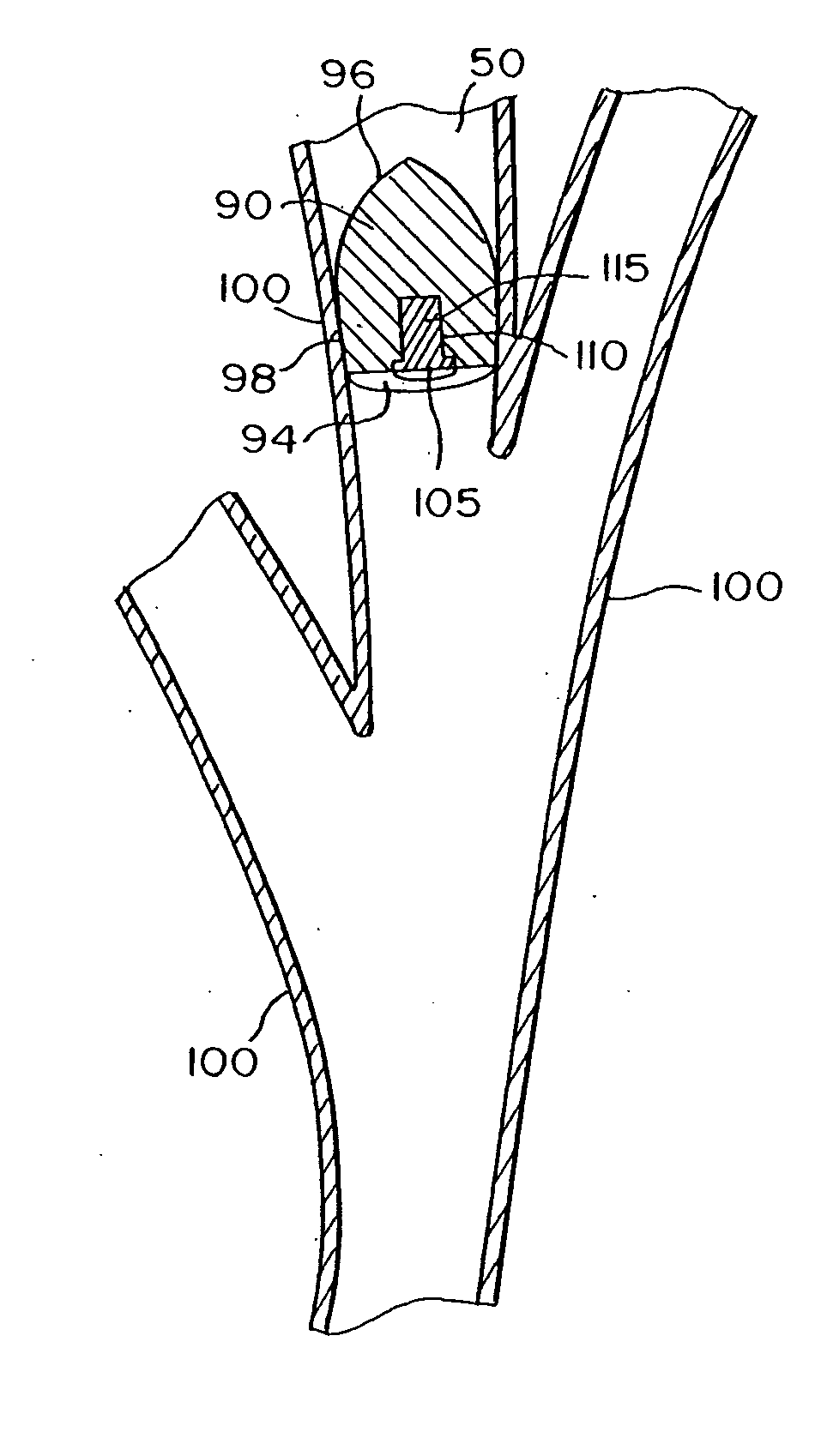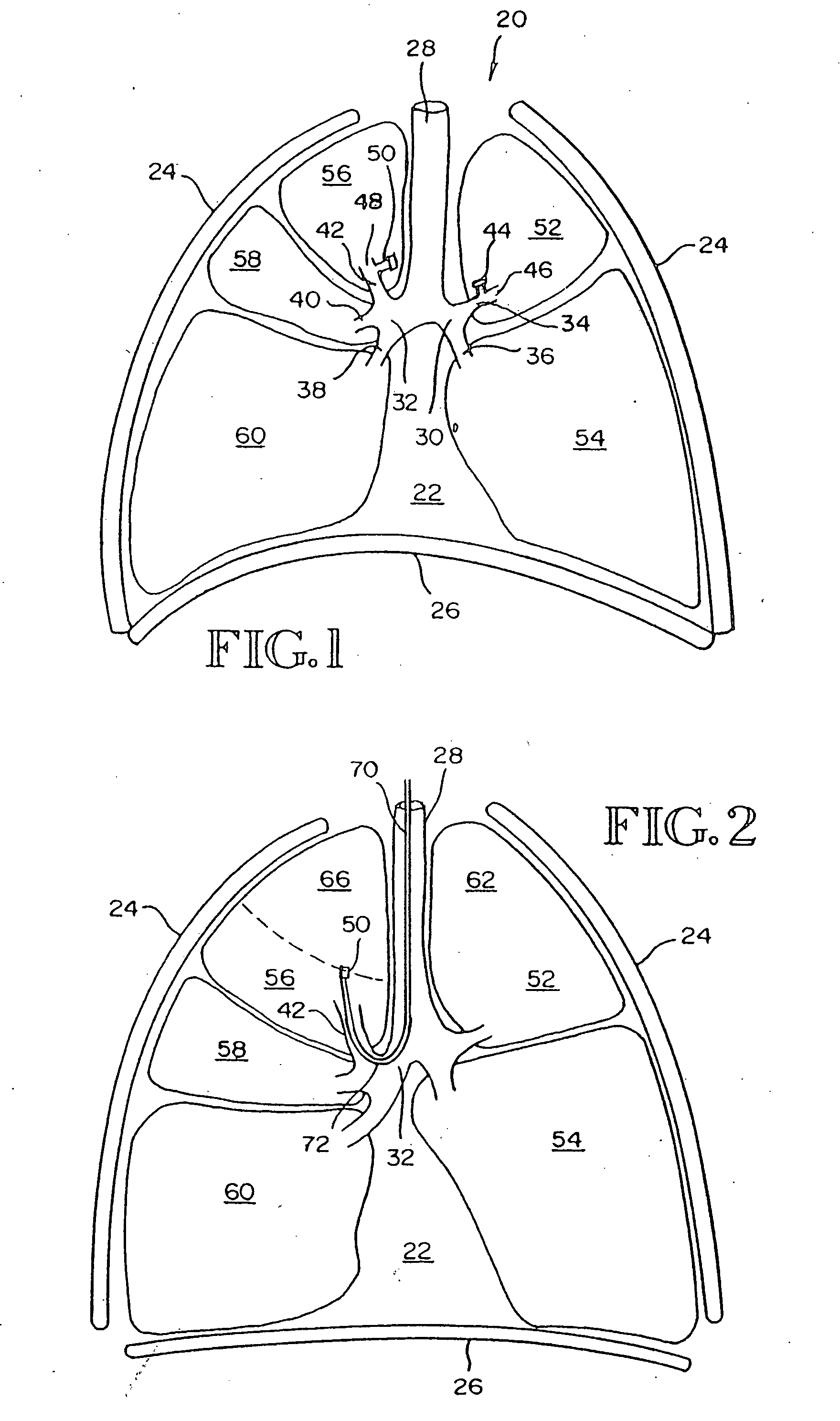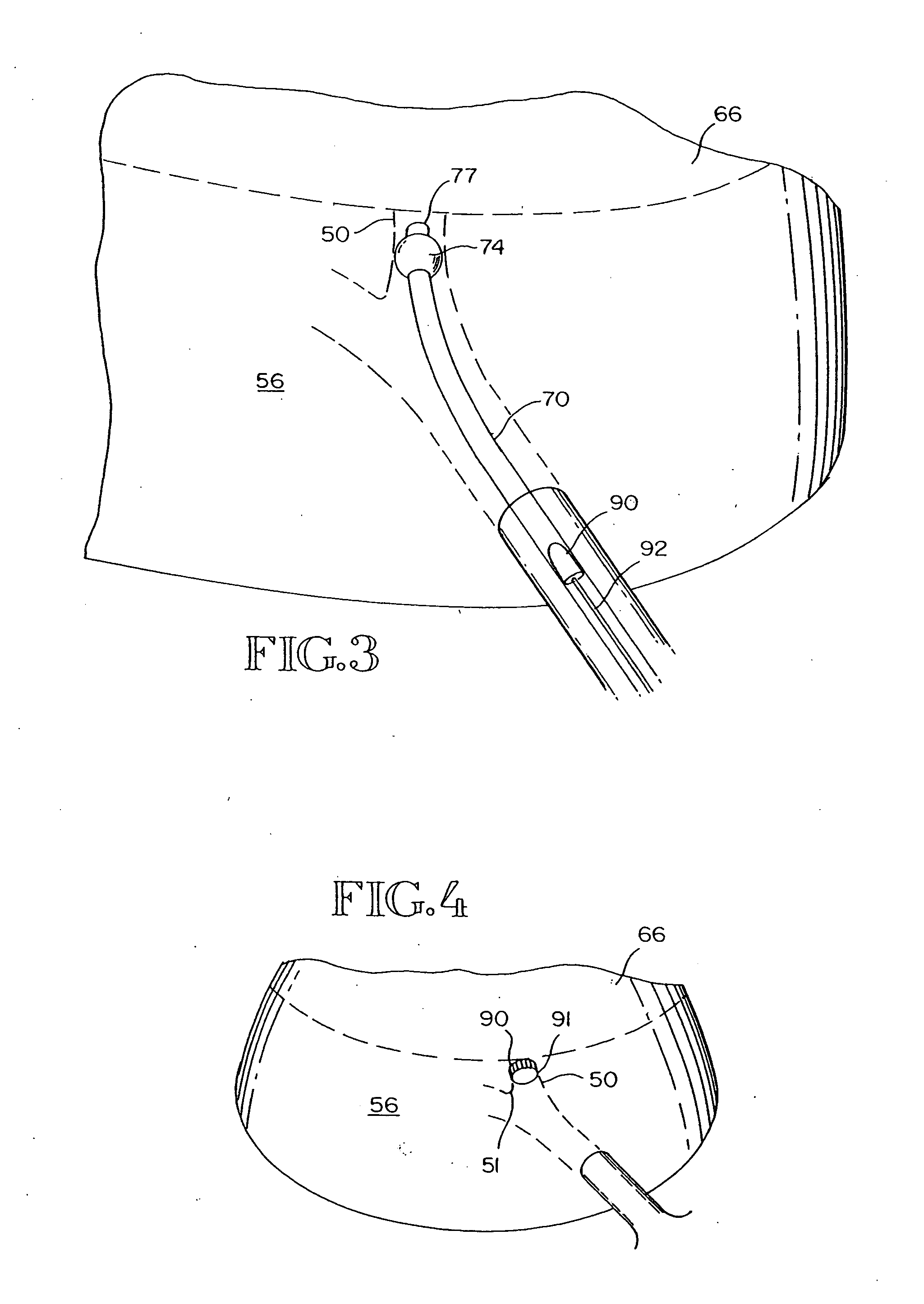Intra-bronchial obstructing device that controls biological interaction with the patient
- Summary
- Abstract
- Description
- Claims
- Application Information
AI Technical Summary
Benefits of technology
Problems solved by technology
Method used
Image
Examples
Embodiment Construction
[0034]FIG. 1 is a sectional view of a healthy respiratory system. The respiratory system 20 resides within the thorax 22 which occupies a space defined by the chest wall 24 and the diaphragm 26.
[0035] The respiratory system 20 includes the trachea 28, the left mainstem bronchus 30, the right mainstem bronchus 32, the bronchial branches 34, 36, 38, 40, and 42 and sub-branches 44, 46, 48, and 50. The respiratory system 20 further includes left lung lobes 52 and 54 and right lung lobes 56, 58, and 60. Each bronchial branch and sub-branch communicates with a respective different portion of a lung lobe, either the entire lung lobe or a portion thereof. As used herein, the term “air passageway” is meant to denote either bronchi or bronchioles, and typically means a bronchial branch or sub-branch which communicates with a corresponding individual lung lobe or lung lobe tissue portion to provide inhaled air thereto or conduct exhaled air therefrom.
[0036] Characteristic of a healthy respir...
PUM
 Login to View More
Login to View More Abstract
Description
Claims
Application Information
 Login to View More
Login to View More - R&D
- Intellectual Property
- Life Sciences
- Materials
- Tech Scout
- Unparalleled Data Quality
- Higher Quality Content
- 60% Fewer Hallucinations
Browse by: Latest US Patents, China's latest patents, Technical Efficacy Thesaurus, Application Domain, Technology Topic, Popular Technical Reports.
© 2025 PatSnap. All rights reserved.Legal|Privacy policy|Modern Slavery Act Transparency Statement|Sitemap|About US| Contact US: help@patsnap.com



